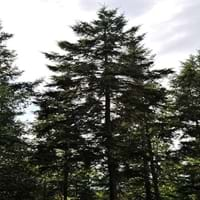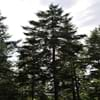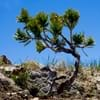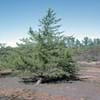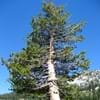Life Span
Perennial
Perennial
Type
Needled or Scaled Evergreen
Bulb or Corm or Tuber
Origin
Northeastern United States, North-Central United States, Alaska, Canada
South America
Types
Oriental spruce, Bog spruce, Weeping spruce
Pamianthe cardenasii , Pamianthe parviflora , Pamianthe peruviana
Number of Varieties
Not Available
Habitat
Moist Soils, Slopes, Swamps, Well Drained
All sorts of environments
USDA Hardiness Zone
1-6
8-10
Sunset Zone
A1, A2, A3, 1a, 1b, 2a, 2b, 3a, 3b, 4, 5, 6, 7
21,22
Habit
Narrow Upright/Fastigiate
Clump-Forming
Flower Color Modifier
Bicolor
Bicolor
Leaf Color in Spring
Green, Sea Green, Blue Green, Gray Green
Dark Green
Leaf Color in Summer
Blue Green, Gray Green
Light Green
Leaf Color in Fall
Blue Green, Gray Green
Several shades of Green
Leaf Color in Winter
Blue Green, Gray Green, Dark Green
Light Green
Leaf Shape
Needle like
Strap shaped
Plant Season
Spring, Summer, Fall, Winter
Spring, Summer, Fall
Sunlight
Full Sun, Partial Sun
Partial Sun, Partial shade
Type of Soil
Clay, Loam
Loam, Sand
The pH of Soil
Acidic, Neutral
Acidic, Neutral, Alkaline
Soil Drainage
Average
Average
Bloom Time
Not Available
Spring, Late Spring, Early Summer, Summer, Late Summer
Tolerances
Drought
Drought
Where to Plant?
Ground
Ground, Pot
How to Plant?
Cuttings, Seedlings
Offsets
Plant Maintenance
Medium
Medium
Watering Requirements
Average Water Needs, Do Not over Water, Requires regular watering
Keep the ground moist but not water-logged
In Summer
Lots of watering
Lots of watering
In Spring
Moderate
Moderate
In Winter
Average Water
Average Water
Soil pH
Acidic, Neutral
Acidic, Neutral, Alkaline
Soil Type
Clay, Loam
Loam, Sand
Soil Drainage Capacity
Average
Average
Sun Exposure
Full Sun, Partial Sun
Partial Sun, Partial shade
Pruning
Pinch Tips, Remove crossing or rubbing branches, Remove damaged leaves, Remove dead branches, Remove dead leaves, Remove dead or diseased plant parts
Pinch or prune as they grow to promote branching and bushiness, Remove damaged leaves, Remove dead branches, Remove dead leaves, Requires little pruning
Fertilizers
All-Purpose Liquid Fertilizer
All-Purpose Liquid Fertilizer, High phosphorus
Pests and Diseases
Red blotch
Leaf spot, Mosaic viruses
Plant Tolerance
Drought
Drought
Flower Petal Number
Single
Single
Foliage Texture
Fine
Coarse
Foliage Sheen
Glossy
Glossy
Attracts
Birds
Bees, Birds, Bumblebees, Butterflies, Hummingbirds, pollinators
Allergy
Dermatitis
Unknown
Aesthetic Uses
Showy Purposes
Beautification, Bouquets, Ornamental use, Showy Purposes
Beauty Benefits
Good for skin
No Beauty Benefits
Environmental Uses
Air purification, Shadow Tree
Air purification
Medicinal Uses
anti-inflammatory, Disinfectant, Kidney problems, Odontalgic, Poultice, Salve, Stomachic, tuberculosis, Vulnerary
No Medicinal Use
Part of Plant Used
Flowers, Inner Bark, Seeds
Not Available
Other Uses
Disinfectant, Gum, Paper pulp, Pitch, String, Used as a dye, Used in paper industry, Waterproofing
Beneficial species for attracting pollinators, Decoration Purposes
Used As Indoor Plant
No
No
Used As Outdoor Plant
Yes
Yes
Garden Design
Bog Garden, Screening, Wind Break
Bog Garden, Container, Feature Plant, Foundation, Mixed Border, Water Gardens
Botanical Name
PICEA mariana
HYMENOCALLIS longipetala
Common Name
Black Spruce, Bog Spruce, Swamp Spruce
Peruvian Daffodil, Spiderlily
In Hindi
Black Spruce Tree
peruvian daffodil
In German
Schwarz Fichte
peruvian daffodil
In French
Noir Épicéa
peruvian daffodil
In Spanish
Negro árbol de abeto
Pamianthe
In Greek
Μαύρο Spruce Tree
peruvian daffodil
In Portuguese
Árvore Spruce Preto
peruvian daffodil
In Polish
Czarny Świerk Drzewo
peruvian daffodil
In Latin
Niger abiegnis
peruvian daffodil
Phylum
Coniferophyta
Magnoliophyta
Class
Pinopsida
Liliopsida
Order
Pinales
Asparagales
Family
Pinaceae
Amaryllidaceae
Clade
Not Available
Angiosperms, Monocots
Tribe
Not Available
Clinantheae
Subfamily
Pinoideae
Amaryllidoideae
Number of Species
Not Available
Not Available
Season and Care of Black Spruce and Peruvian Daffodil
Season and care of Black Spruce and Peruvian Daffodil is important to know. While considering everything about Black Spruce and Peruvian Daffodil Care, growing season is an essential factor. Black Spruce season is Spring, Summer, Fall and Winter and Peruvian Daffodil season is Spring, Summer, Fall and Winter. The type of soil for Black Spruce is Clay, Loam and for Peruvian Daffodil is Loam, Sand while the PH of soil for Black Spruce is Acidic, Neutral and for Peruvian Daffodil is Acidic, Neutral, Alkaline.
Black Spruce and Peruvian Daffodil Physical Information
Black Spruce and Peruvian Daffodil physical information is very important for comparison. Black Spruce height is 3,000.00 cm and width 60.00 cm whereas Peruvian Daffodil height is 61.00 cm and width 61.00 cm. The color specification of Black Spruce and Peruvian Daffodil are as follows:
Black Spruce flower color: White
Black Spruce leaf color: Green, Sea Green, Blue Green and Gray Green
Peruvian Daffodil flower color: White
- Peruvian Daffodil leaf color: Dark Green
Care of Black Spruce and Peruvian Daffodil
Care of Black Spruce and Peruvian Daffodil include pruning, fertilizers, watering etc. Black Spruce pruning is done Pinch Tips, Remove crossing or rubbing branches, Remove damaged leaves, Remove dead branches, Remove dead leaves and Remove dead or diseased plant parts and Peruvian Daffodil pruning is done Pinch or prune as they grow to promote branching and bushiness, Remove damaged leaves, Remove dead branches, Remove dead leaves and Requires little pruning. In summer Black Spruce needs Lots of watering and in winter, it needs Average Water. Whereas, in summer Peruvian Daffodil needs Lots of watering and in winter, it needs Average Water.
